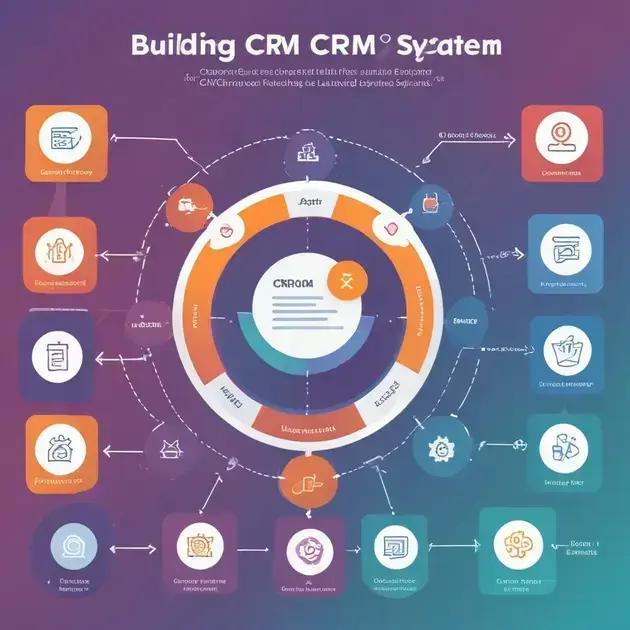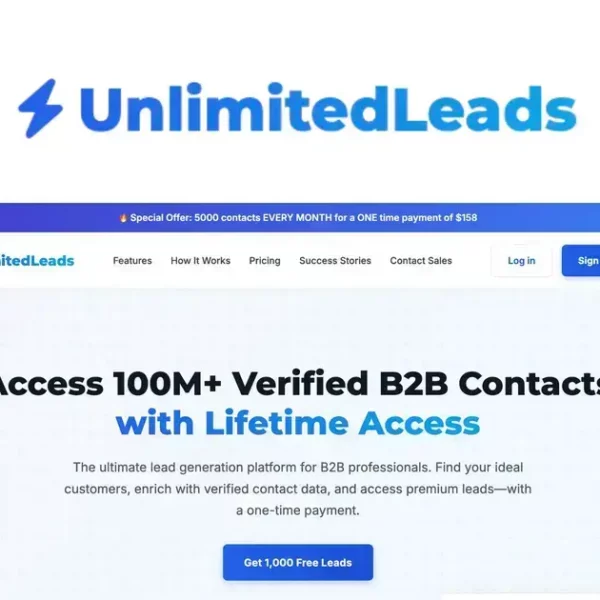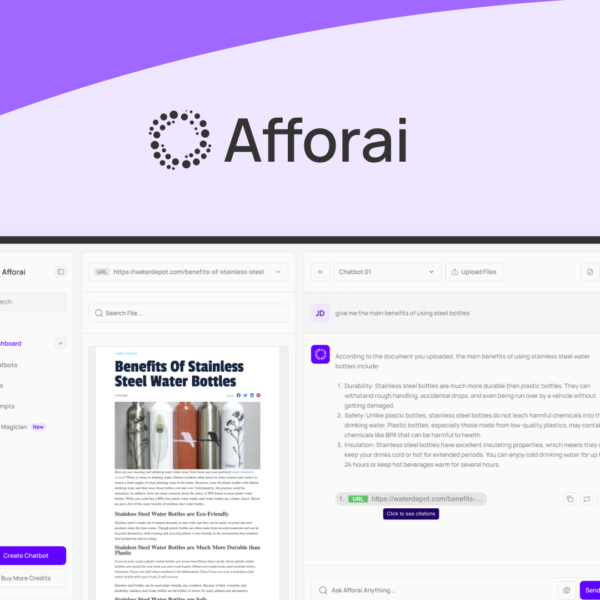Building your own CRM allows businesses to create a tailored customer relationship management system that meets specific needs, improving efficiency and enhancing customer interactions. Key steps include defining objectives, selecting features, and utilizing tools like Salesforce and HubSpot for effective implementation.
Building your own CRM provides businesses the flexibility to tailor customer management to their specific needs. By customizing your CRM, you can enhance relationships with customers, streamline processes, and improve overall efficiency. In this guide, we will dive into the essential aspects of building a personalized CRM that suits your unique business requirements.
What is a Build Your Own CRM?
What is a Build Your Own CRM? is a customizable software solution that allows businesses to create a customer relationship management (CRM) system tailored to their unique needs. Unlike off-the-shelf CRM applications, which come with fixed features and functions, a build-your-own CRM gives users the flexibility to modify or add necessary components to fit their specific workflow.
This type of CRM enables businesses to manage customer interactions more effectively by ensuring that the system aligns with their particular sales processes, customer service models, and reporting needs. Companies can choose which features are most important, such as contact management, task assignments, or integration with other tools.
Key Characteristics
One of the main characteristics of a build-your-own CRM is customization. Users can select features that best serve their customer management objectives. Additionally, it often supports integration with other software tools, making it easier to consolidate various aspects of business operations.
Benefits of a Customizable CRM
Building your own CRM allows for the elimination of unnecessary features that may clutter a more general system. This focus on essential tools increases user engagement and satisfaction, as the software becomes truly beneficial for the team. Furthermore, businesses can adapt the CRM as they grow, adding new functionalities as needed.
In summary, a build-your-own CRM empowers businesses to take control of their customer management processes, tailoring their systems to meet their specific needs while fostering better relationships with customers.
Benefits of Customizing Your CRM

Benefits of Customizing Your CRM include significant advantages that can help businesses better meet their needs and enhance customer relationships. By tailoring your CRM, you gain the ability to focus on features that are truly important for your organization.
Increased Efficiency
Custom CRMs streamline workflows by allowing businesses to eliminate unnecessary features found in standard systems. With a tailored solution, users can access only the tools they need, which saves time and reduces confusion.
Improved User Experience
With a customized CRM, the user experience is greatly enhanced. Employees can work more effectively when the system is designed with their tasks in mind. This can lead to higher adoption rates and employee satisfaction as users interact with a system that meets their exact requirements.
Better Customer Insights
Custom CRM systems can be configured to gather and analyze specific customer metrics that matter most to your business. This capability provides valuable insights into customer behavior, preferences, and trends, enabling more informed decision-making and targeted marketing efforts.
Scalability
As businesses grow, so too do their needs. A customizable CRM allows for easy adaptation as new features can be added and existing ones adjusted. This scalability ensures that the system remains relevant and effective as the organization evolves.
Enhanced Integration
Many businesses rely on various software tools. A custom CRM can be designed to integrate seamlessly with these tools, creating a unified platform that improves data sharing and coherence across all business functions.
In summary, customizing your CRM not only brings operational benefits but also fosters better relationships with customers by providing the necessary tools and insights tailored for your specific business environment.
Key Features to Include in Your CRM
Key Features to Include in Your CRM are essential for creating a powerful customer relationship management system that meets the unique needs of your business. By selecting the right features, you can enhance customer interaction, streamline workflows, and drive better outcomes.
Contact Management
A robust contact management feature is the foundation of any CRM. It allows you to store and organize all customer and lead information in one place, making it easy to track interactions, manage relationships, and access relevant data quickly.
Task and Activity Management
Integrating task and activity management helps organize tasks related to customer interactions. This feature allows users to set reminders, schedule follow-ups, and track the status of tasks, ensuring that no customer inquiry falls through the cracks.
Reporting and Analytics
Built-in reporting and analytics are crucial for understanding customer behavior and sales performance. This feature enables you to generate reports on various metrics, such as sales trends, customer acquisition costs, and overall business performance at a glance, assisting in data-driven decision-making.
Email Integration
Email integration connects your CRM with your email client, allowing you to send and receive emails directly within the CRM. This feature streamlines communication and helps keep all customer interactions centralized and easily accessible.
Customizable Dashboards
Customizable dashboards let users tailor their workspace to display the most relevant information. Users can prioritize the data they want to see, such as sales figures or customer inquiries, for quick access and enhanced productivity.
Mobile Access
With the growing need for flexibility, mobile access is a vital feature. A mobile-friendly CRM allows users to access customer information, manage tasks, and communicate with clients at any time and from anywhere, ensuring productivity even when on the go.
By incorporating these key features into your CRM, you can enhance your business processes, improve customer relationships, and drive overall success.
Steps to Build Your Own CRM

Steps to Build Your Own CRM provide a clear roadmap for customizing a customer relationship management system that fits your business needs. By following these steps, you can create a functional and user-friendly CRM.
1. Define Your Objectives
Start by identifying the specific goals you want to achieve with your CRM. Are you looking to improve customer communication, track sales, or gather customer insights? Defining clear objectives will guide your design and feature selection.
2. Identify Key Features
Based on your objectives, list the essential features your CRM must have. Common features include contact management, task tracking, email integration, reporting tools, and automation functions. Prioritize these features to ensure your CRM meets your most critical needs.
3. Choose a Development Approach
Decide whether to build your CRM from scratch, use a customizable platform, or adapt existing software. Building from scratch offers maximum flexibility, while customizable platforms can save time and resources.
4. Design the User Interface
A user-friendly interface is crucial for user adoption. Design the interface to be intuitive, making it easy for team members to navigate and utilize the CRM. Gather feedback during the design phase to make necessary adjustments.
5. Develop and Integrate
Once the design is complete, start the development process. This includes coding the necessary functions, integrating with other software tools, and ensuring data flows seamlessly between systems.
6. Test Thoroughly
Before launching your CRM, conduct thorough testing. Involve potential users in the testing phase to identify any issues or improvements needed. This step is vital to ensure the CRM functions as intended and meets user expectations.
7. Launch and Train Your Team
After successful testing, launch your CRM and provide training for your team. Explain the features and benefits, and ensure users know how to navigate the system effectively. Continuous support can help with any challenges they encounter.
8. Gather Feedback and Iterate
After launch, gather feedback from users regularly. Use this feedback to make improvements and updates to the CRM, ensuring it continues to meet your business needs as they evolve.
By following these steps, you can build a CRM tailored to your organization, enhancing customer relationships and optimizing operations.
Best Tools for Creating Your CRM
Best Tools for Creating Your CRM are essential resources that help businesses build a customized customer relationship management system. Utilizing the right tools can streamline the development process and enhance the functionality of your CRM.
1. Salesforce
Salesforce is a powerful CRM platform that offers extensive customization options. Its app marketplace, known as AppExchange, provides thousands of third-party applications, allowing businesses to tailor their CRM solution according to their specific needs. Users can automate tasks, track customer interactions, and generate detailed reports easily.
2. HubSpot CRM
HubSpot CRM is an excellent option for small to medium-sized businesses looking for an easy-to-use and free CRM solution. It allows for customization of pipelines and offers robust tools for email tracking, lead management, and analytics—all in one platform. Its user-friendly interface makes it accessible for teams without extensive technical knowledge.
3. Zoho CRM
Zoho CRM is a versatile tool that provides a range of features, including AI-driven insights, automation, and customizable dashboards. It also supports integration with various apps, making data sharing smooth. Zoho CRM is ideal for businesses needing flexibility and an affordable pricing model.
4. Microsoft Dynamics 365
Microsoft Dynamics 365 is a comprehensive CRM solution that offers deep integration with tools like Microsoft Office and Azure. It provides extensive customization options, allowing users to design a CRM that fits their workflows. This tool is well-suited for larger organizations or those already using Microsoft products.
5. Airtable
Airtable combines features of a spreadsheet and a database, making it a flexible option for CRM creation. Users can customize fields, views, and forms to track customer interactions, making it suitable for teams looking for a simple yet powerful solution. Its integration capabilities with various apps enhance its use as a CRM tool.
6. Trello
While Trello is primarily a project management tool, it can effectively be used as a CRM by customizing boards to track customer interactions and sales pipelines. Its visual layout makes it easy to see the status of customer communications and manage tasks efficiently.
By selecting the right tools, businesses can create a CRM that meets their specific needs, ultimately improving how they manage customer relationships and drive growth.
In Summary: Your Path to Building a Customized CRM
Creating your own CRM can transform how your business manages customer relationships. By following the steps outlined in this guide, from defining your objectives to choosing the right tools, you can tailor a system that fits your needs perfectly.
Utilizing platforms like Salesforce, HubSpot, Zoho, and others allows for flexibility and scalability. Whether you’re a small business or a larger organization, these tools can help streamline processes and enhance customer interactions.
Don’t underestimate the importance of a well-structured CRM—it can greatly improve efficiency and customer satisfaction, paving the way for your business’s success.
FAQ – Frequently Asked Questions about Building Your Own CRM
What is a CRM system used for?
A CRM system is used to manage customer relationships, track interactions, and store information about customers to enhance engagement and improve sales.
Do I need technical skills to build my own CRM?
While some technical skills can help, many tools available for building a CRM offer user-friendly interfaces that do not require extensive coding knowledge.
What are the benefits of customizing a CRM?
Customizing a CRM allows you to tailor features to your specific business needs, increasing efficiency, improving user experience, and enhancing customer insights.
Can I integrate my CRM with other software?
Yes, most modern CRM tools provide integration options with various software, such as email applications, marketing tools, and project management systems.
How long does it take to build a CRM?
The time to build a CRM varies based on complexity. A basic CRM can take a few weeks to several months to develop and fully implement.




